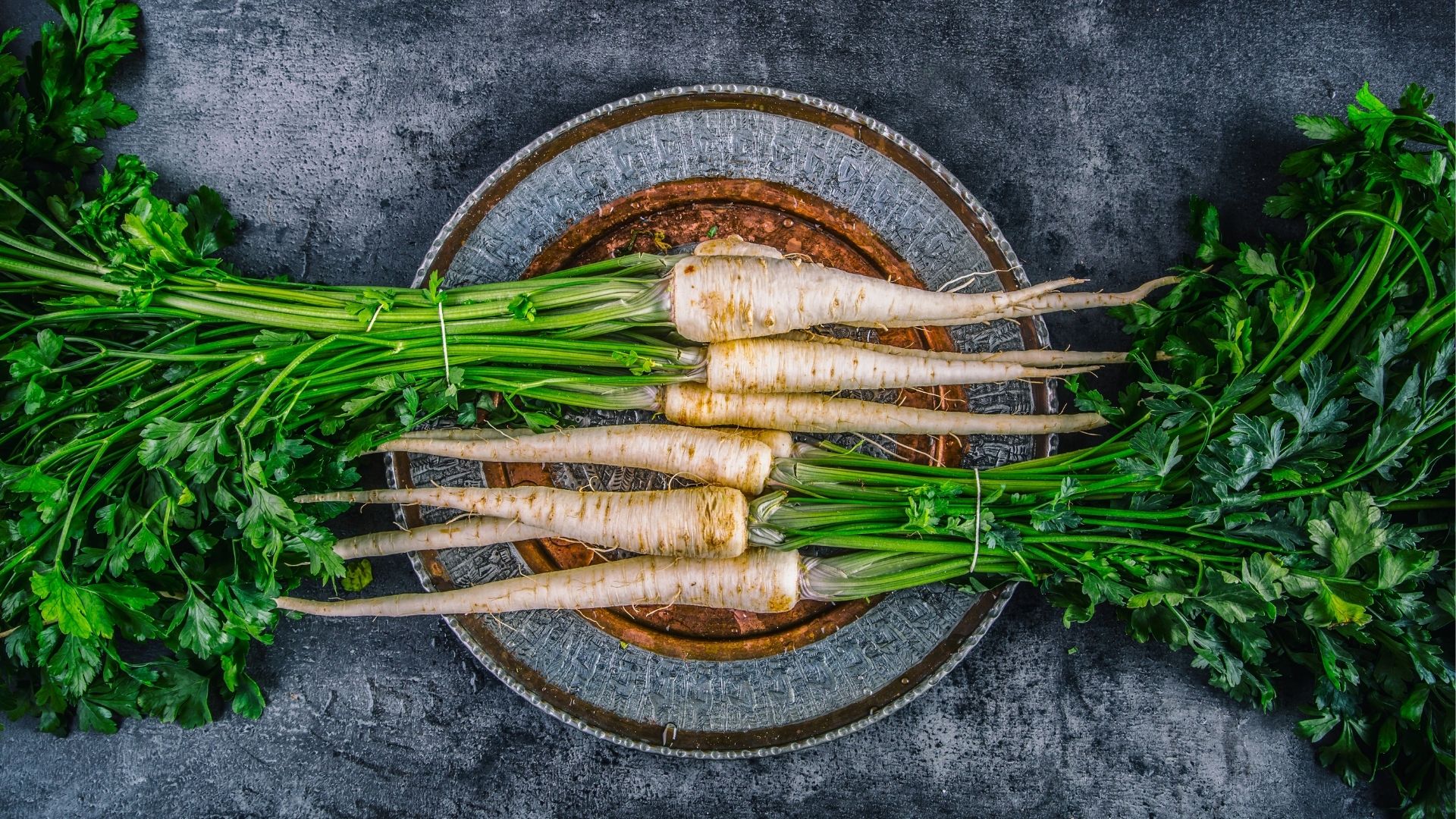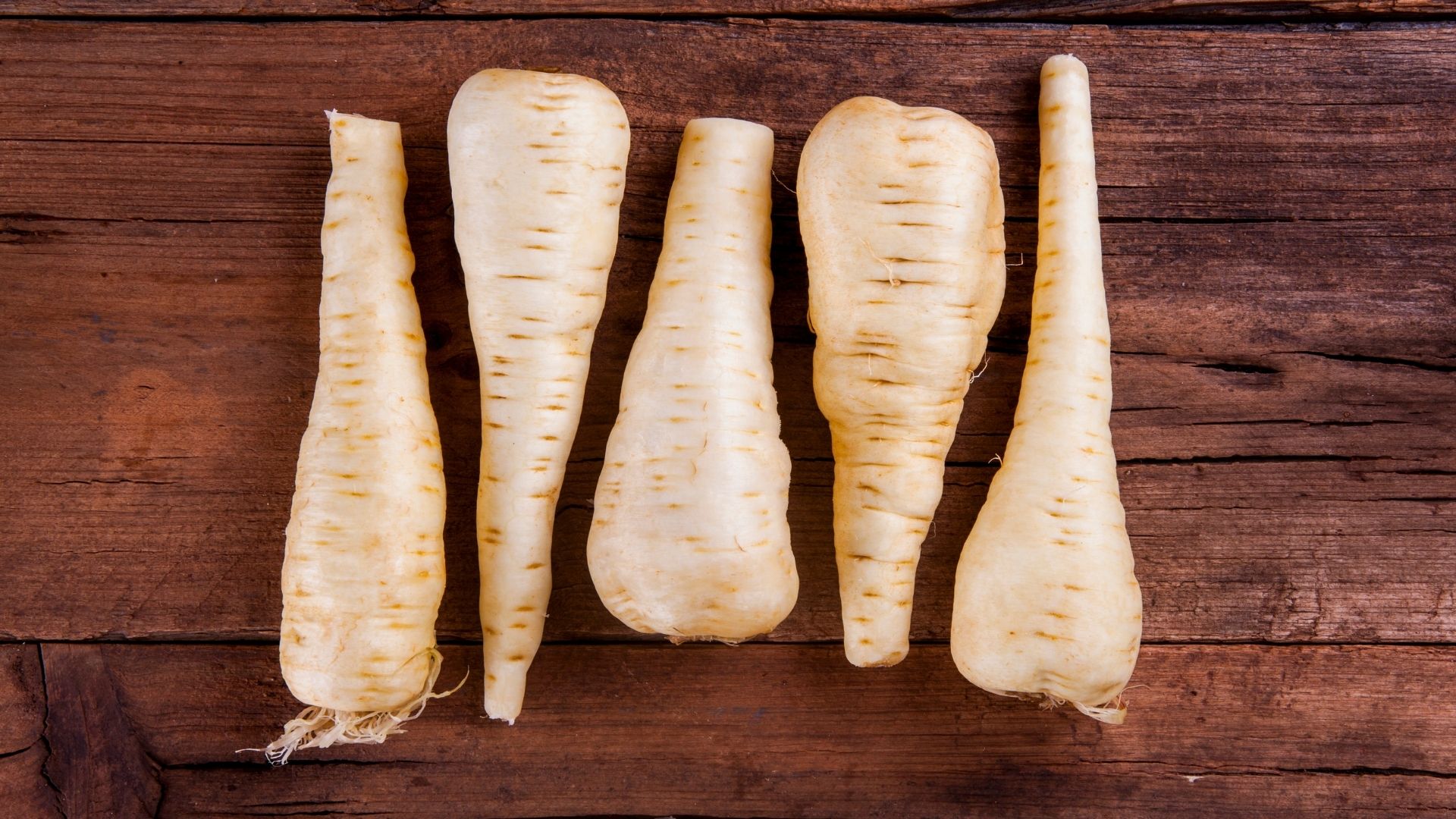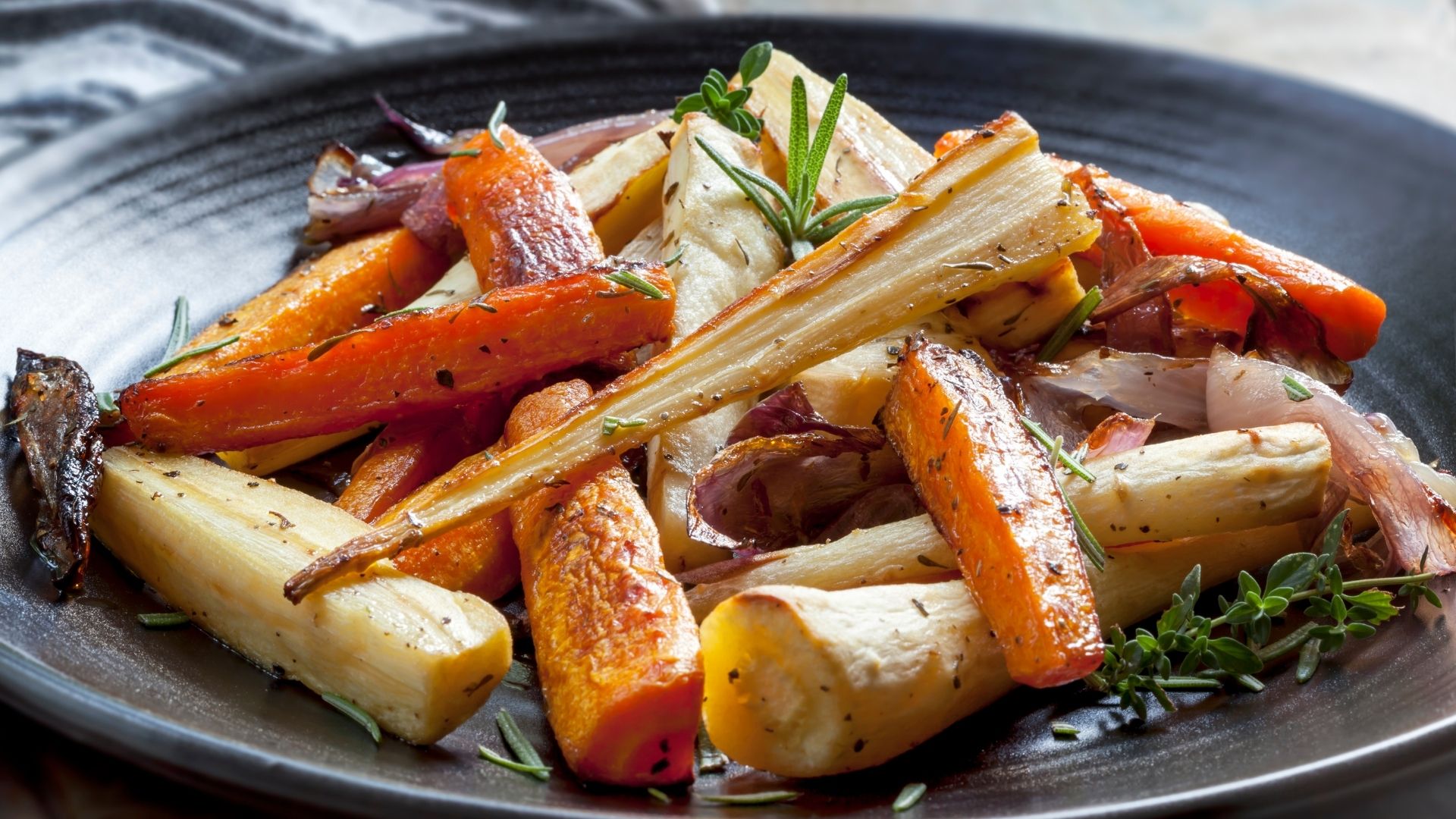An inconspicuous all-rounder – find out here what this vegetable old-timer still has to offer today!

The parsnip is a rather old-fashioned vegetable. In the 18th century, this root vegetable was an important staple food and then the parsnip slipped into the background. Why? With the discovery of the potato and the carrot, the parsnip became less and less important. Today, the parsnip is fighting its way back onto our plates – and rightly so, because it contains some modern surprises! In the following article you can read about the correct preparation of the root, its many uses in the kitchen, and how the parsnip differs from other root vegetables.
The parsnip is a typical winter vegetable that is harvested from September to March. It has a slightly sweet, earthy, and pleasantly nutty aroma. These specific flavours come from the essential oils contained in the root vegetable. It is not uncommon for the taste of the parsnip to be described as a mixture of carrot and celery.
The nutrients in the often overlooked vegetable are also impressive. The parsnip provides vitamin C, B vitamins, folic acid and calcium, as well as high amounts of potassium. Potassium helps your heart beat regularly and improves circulation in a natural way – ideal for people with high blood pressure. In addition, the parsnip also contains a considerable amount of inulin, a prebiotic reserve material that is good for our digestion as a soluble fibre. You may have also discovered parsnip listed among the ingredients in baby food. This is no coincidence. The winter vegetable is particularly easy to digest, contains little nitrate, and is therefore well suited for a sensitive stomach. And the sweeter taste means that a baby is more likely to accept it.
Parsley root or parsnip – what’s the difference?
It is difficult to distinguish the two types of vegetables by looking at them. Only the slightly thicker head and sunken leaf base allow the parsnip to be recognised visually. Another option: the smell test. Parsley roots, as the name suggests, smell very strongly of parsley, whereas parsnips have a sweeter aroma.

Shopping and storage tips
Once you have found some parsnips, there are a few other things to consider when buying. For example, it is important that the parsnip has a smooth and shiny skin. Why? A dull, wrinkled appearance indicates improper storage, which could mean a lower quality in terms of taste and nutritional content. And a little tip: search for the small ones in the bunch as they are more tender than the large ones. The larger ones become fibrous during preparation and taste woody. The leaves of the parsnip also help to identify the quality of the vegetable. When the leaves are nice and green instead of yellow, this indicates that the parsnips are particularly fresh.
When you get home, ideally store the root vegetables in the Biofresh safe of your Liebherr refrigerator. Wrapped in a damp kitchen towel, the root vegetables keep for a particularly long time. If you do not want to do without parsnips in summer, you can also freeze them for 10 months without any problem.
The right preparation
After purchase comes preparation. And it’s really straightforward! Similar to a carrot, parsnip can be easily cleaned with a vegetable brush. If you decide to use the peel, you can also give it an additional wash. Most of the vitamins are found directly under the skin. However, if you do not like the slightly bitter taste, it is better to peel them. Next you need to cut off the top and bottom ends. Then the root vegetable is ready to be used.
The parsnip is very versatile. According to your own taste, it can be baked, fried, boiled, deep-fried or puréed as a main dish or side dish, and can even be used in desserts. The vegetable tastes particularly good in combination with other root vegetables such as carrots, potato, beetroot or sweet potato. The parsnip is therefore often found in hearty stews, delicious soups, casseroles, stir frys or grated raw in salads. But the root vegetable is also excellent in cakes due to its sweet aroma. How about a parsnip muffin or parsnip cheesecake, for example? Try it out!

#parsnip, #rootvegetable, #wintervegetable, #parsleyroot, #carrot, #essentialoils, #potassium, #babyfood, #dessert, #diverse